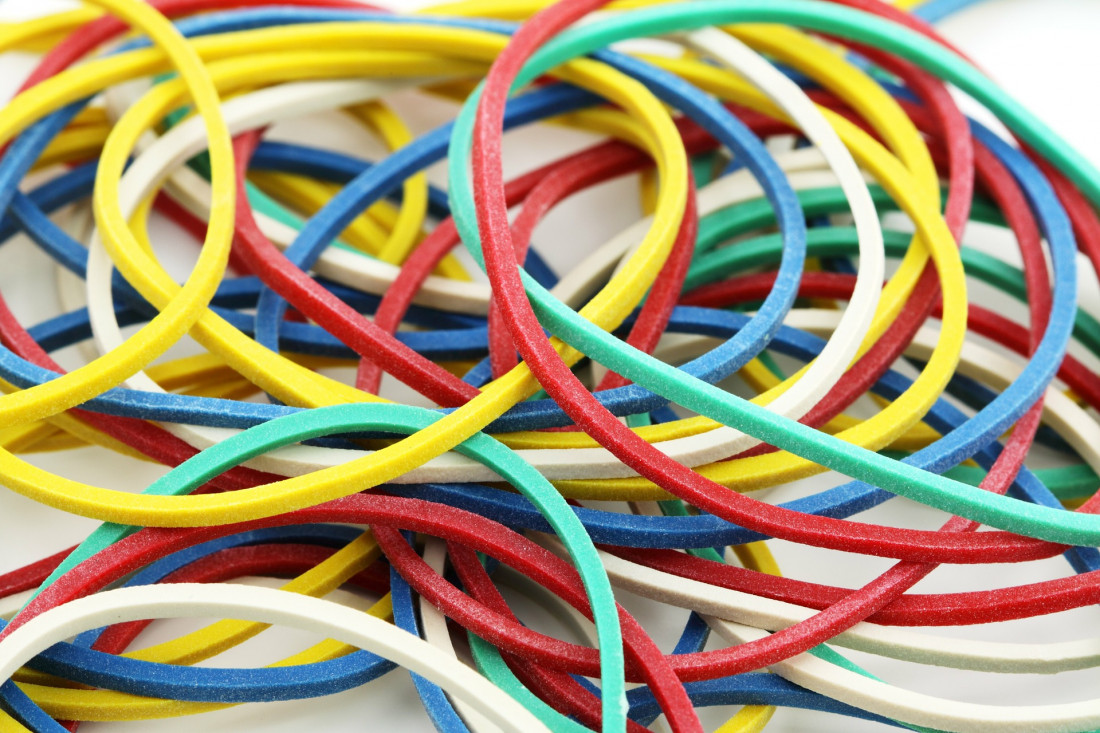3D printing has become a much more versatile possibility thanks to the work of a team of researchers who claim to have invented the most elastic, 3D printable polymer in the world. The work is a result of a collaboration between researchers from the Hebrew University of Jerusalem (HUJI), and two teams from Singapore. One from the Singapore University of Technology and Design’s Digital Manufacturing and Design Centre (DManD), and another from the Campus for Research Excellence and Technological Enterprise (CREATE).
Publishing their results in the Journal of Advanced Materials, the research teams explain how their stretchable UV curable (SUV) elastomers can be, “stretched by up to 1100% and are suitable for digital light processing (DLP) based 3D printing technology. DLP printing of these SUV elastomers enables the direct creation of highly deformable complex 3D hollow structures such as balloons, soft actuators, grippers, and Bucky ball electronical switches.”
Elastomers are a valuable part of the polymer industry, with polymer manufacturers using their elastic properties for a wide range of applications. For example, they are used in the making of biomedical devices, as well as soft robotics, and are an invaluable addition to flexible electronics. However, uptil now their use has been restricted by their need for thermal curing. While silicon rubber-based materials , which are the most common form of elastomer, typically need traditional manufacturing via molding, cutting, and casting, which keeps costs high.
While the development of a highly elastic elastomer may not surprise many, polymer traders are seeing the new material as a possible game changer. As the plastics industry journal 3D Printer and 3D Printing News reports, “At this point, you may be telling yourself that you’re familiar with 3D printable elastomer materials, and that they do already exist. And while this is true—there are elastomer materials that are commercially available for UV light 3D printing—those on the market cannot stretch beyond 200% once they’ve been cured, a restriction that makes them much less useful for many professional applications.”
It also seems that the new polymer is durable enough to last sufficiently long in most practical situations. As 3D Printer and 3D Printing News explains, “The SUV elastomers have also reportedly shown good mechanical repeatability, making them suitable for use in flexible electronics. This feature was demonstrated by the researchers, who 3D printed a buckyball light switch using the elastomer, and pressed it 1000 times. After the testing, the light switch still worked normally.”
Co-leader of the research project, Professor Shlomo Magdassi, sumarised the discovery’s versatility and practical use, when he said, “Overall, we believe the SUV elastomers, together with the UV curing based 3D printing techniques, will significantly enhance the capability of fabricating soft and deformable 3D structures and devices including soft actuators and robots, flexible electronics, acoustic metamaterials, and many other applications.”
With the discovery of a much more elastic, printable polymer, surely it is only a matter of time before plastic manufacturers begin to design products that take advantage of the greater versatility of 3D printing. Added to this versatility is the fact that the new elastomer may allow for lower production costs. A point made clear, by another of the study’s co-leaders, Assistant Professor Qi Ge, when he said, “Compared to traditional molding and casting methods, using UV curing based 3D printing with the SUV elastomers significantly reduces the fabrication time from many hours, even days, to a few minutes or hours as the complicated and time-consuming fabrication steps such as mold-building, molding/demolding, and part assembly are replaced by a single 3D printing step.”
While the discovery of a highly flexible polymer that is 3D printable, may not stop the world from spinning, but its cheaper production and durability is likely to make waves in the elastomer industry. Given all these factors combined, how long will it be before 3D printing becomes a major method in the manufacture of plastic products? Or is that just stretching this new invention beyond 1100%?

